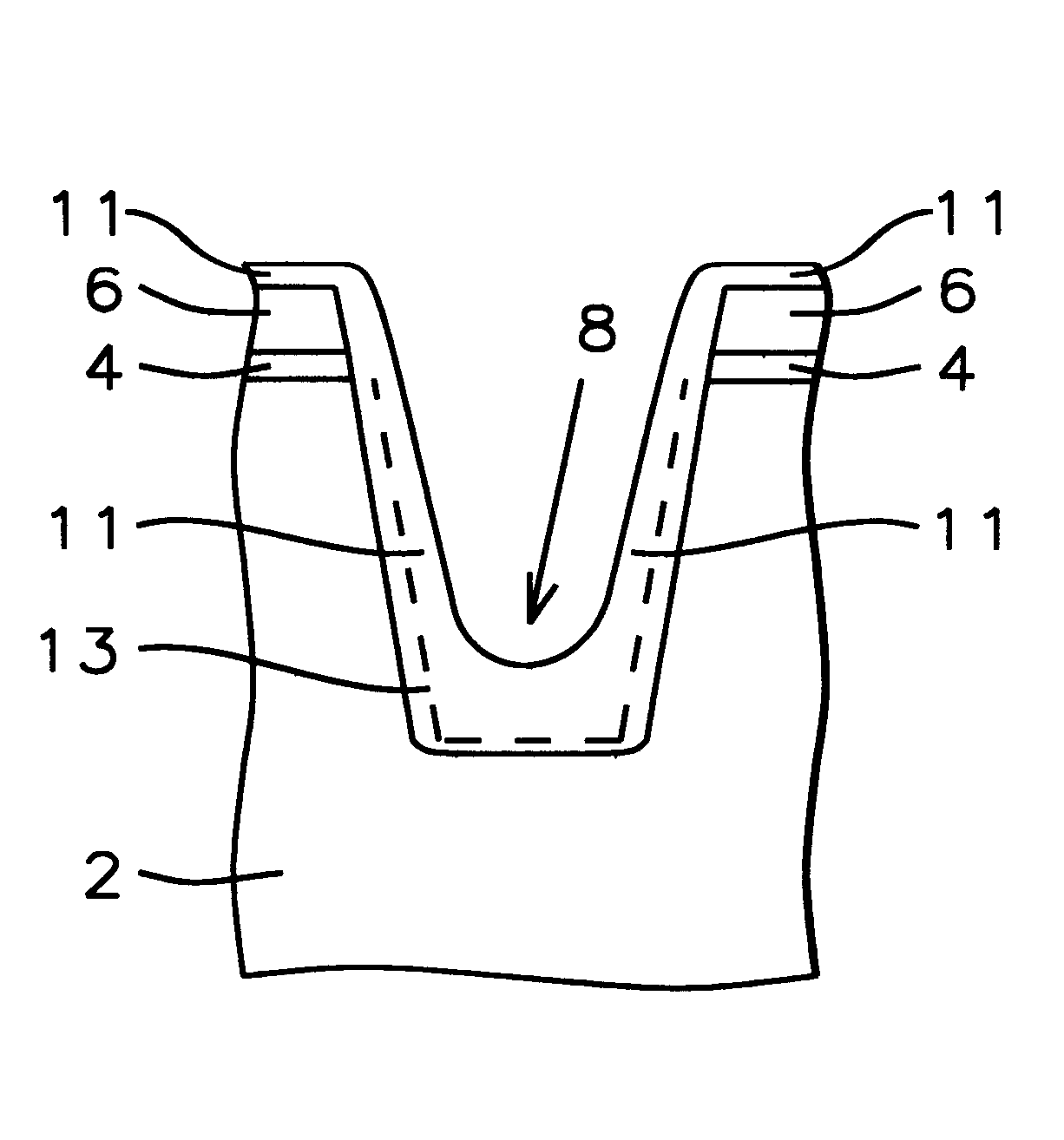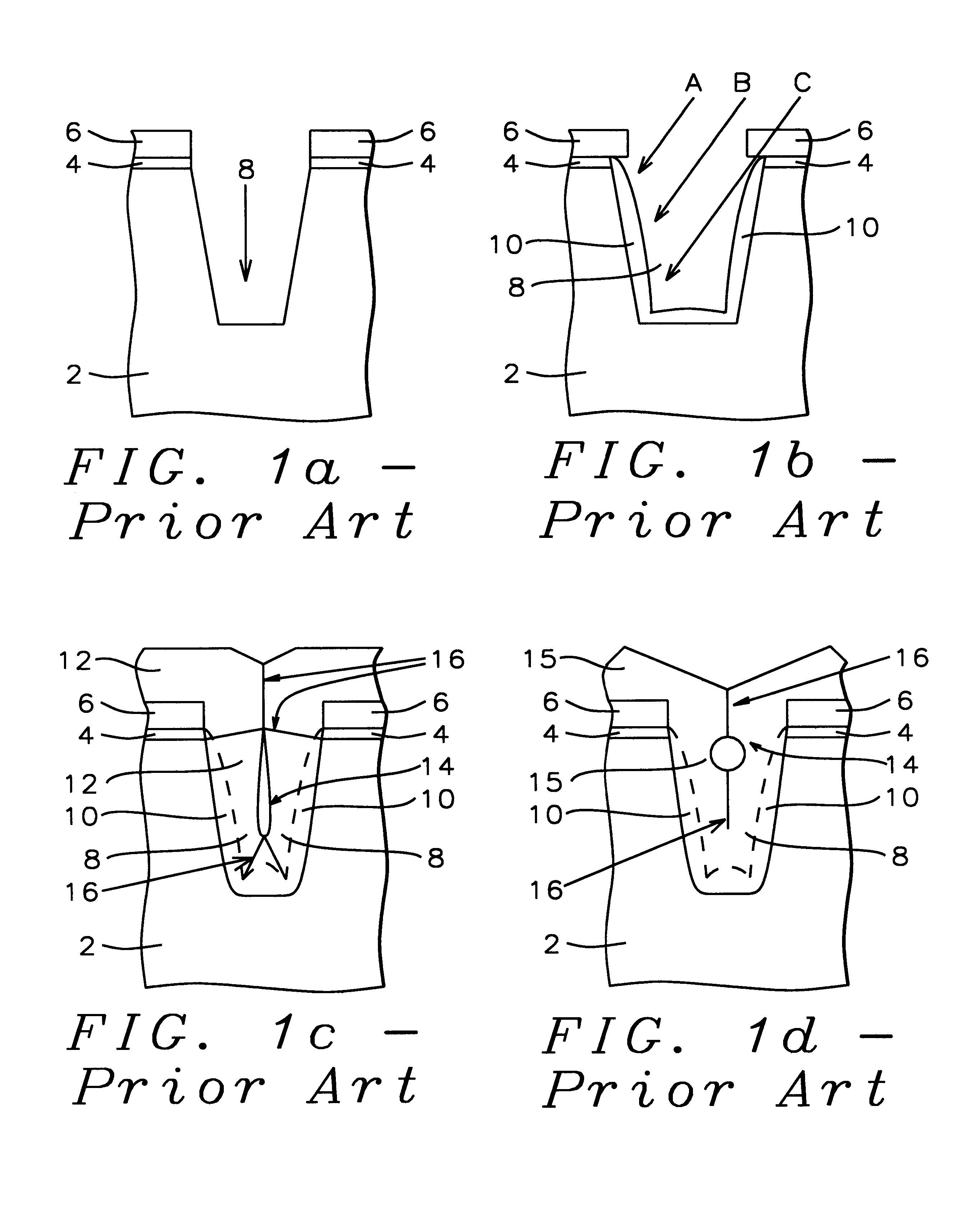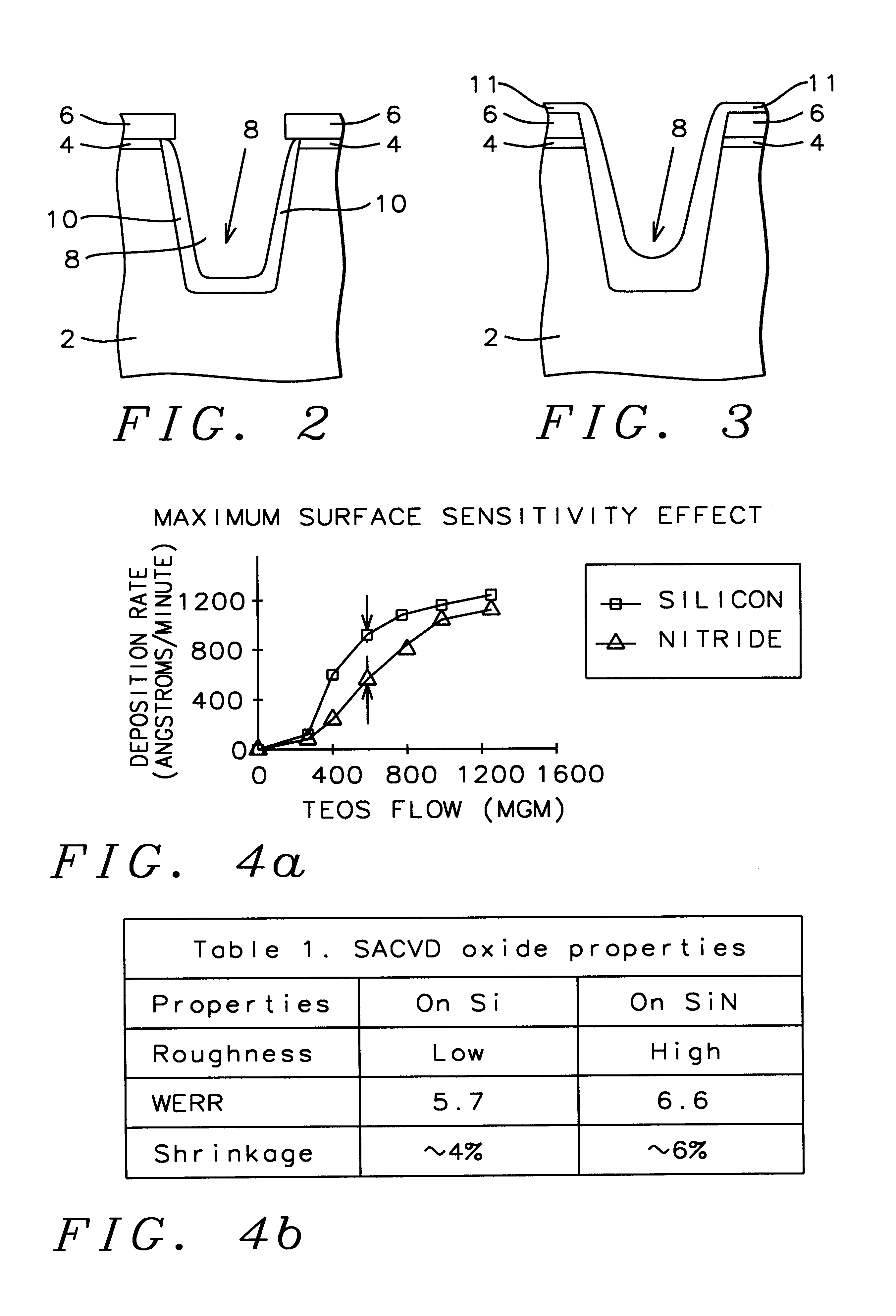Method of filling shallow trenches
- Summary
- Abstract
- Description
- Claims
- Application Information
AI Technical Summary
Problems solved by technology
Method used
Image
Examples
Embodiment Construction
As background to the present invention, a conventional method of fabricating shallow trench isolation (STI) is illustrated as Prior Art in cross-sectional sketches in FIGS. 1a, 1b, 1c, and 1d. As shown in FIG. 1a, the semiconductor substrate 2 is the base starting material for the trench structures. A thermal silicon dioxide pad oxide layer 4 is grown on the silicon substrate, as depicted in FIG. 1a. The thermally grown silicon dioxide pad is grown specifically at a temperature of approximately 1050.degree. C. using an oxygen gas ambient. The thermally grown silicon dioxide pad film thickness is from about 100 to 200 Angstroms. Then a chemically vapor deposited (CVD) silicon nitride layer, pad nitride 6, is deposited on top of the pad silicon dioxide, shown in FIG. 1a. The pad silicon nitride film is deposited, using low pressure chemical vapor deposition (LPCVD ) with the following specific reactor conditions: temperature 700.degree. C., pressure 0.3 Torr, and ratio of ammonia to d...
PUM
 Login to View More
Login to View More Abstract
Description
Claims
Application Information
 Login to View More
Login to View More - R&D
- Intellectual Property
- Life Sciences
- Materials
- Tech Scout
- Unparalleled Data Quality
- Higher Quality Content
- 60% Fewer Hallucinations
Browse by: Latest US Patents, China's latest patents, Technical Efficacy Thesaurus, Application Domain, Technology Topic, Popular Technical Reports.
© 2025 PatSnap. All rights reserved.Legal|Privacy policy|Modern Slavery Act Transparency Statement|Sitemap|About US| Contact US: help@patsnap.com



